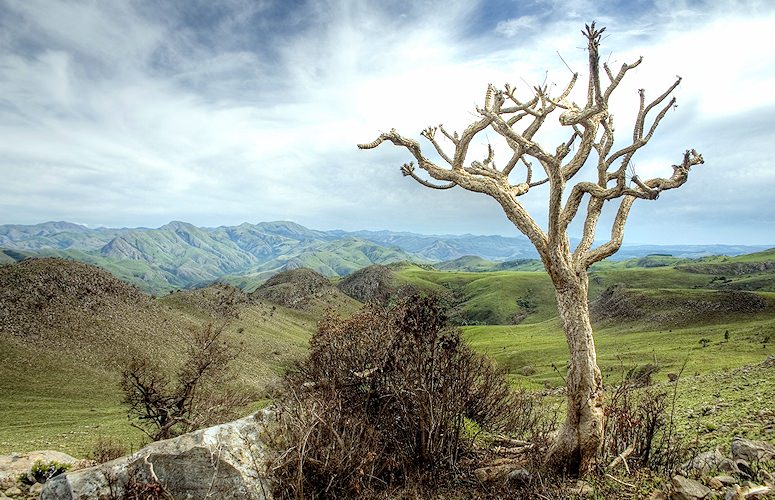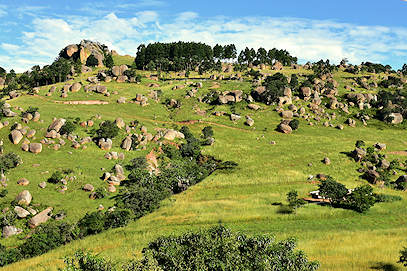This beautiful Kingdom is surrounded on three sides by South Africa and bordered by Mozambique to the east. Swaziland was formerly a British protectorate. It became independent in 1968 as "the Kingdom of Swaziland."

Mbabane is the administrative capital and largest town. Lobamba, an important village, is the traditional or royal capital. Manzini is the country's leading commercial center. In 2018, the Swazi King, the king of one of the last true monarchies on Earth, renamed his country, now officially "the Kingdom of eSwatini," though it is still widely referred to as Swaziland.
Various villages in Swaziland offer visitors the opportunity to experience the local culture and cuisine. The Mantenga Cultural Village in the Ezulwini Valley is a favorite among visitors. Highlights include experiencing traditional dancing and singing and the lifestyle of the Swazi people of over 100 years ago.
A Swaziland golfing experience is unlike anything you've experienced on a golf course. The country's mountainous location did not deter the course designers, and each hole was perfectly planned. The Champion Golf Course at the Royal Swazi Resort & Spa is an excellent 18-hole course set within the natural tranquility of the Ezulwini Valley.
Swazi Candles Center is one of the best places to visit if you appreciate arts and crafts. You will be amazed at the creative genius behind every product and captivated by the intense process each Swazi candle goes through. The candles are all 100% organic and handmade. You can even join the artisans in their workshop!
Many experiences are unique to the tiny country, from the cultural immersion to the breathtaking panoramas of the Ezulwini Valley. The Swazis are warm and friendly people who will indelibly enhance your visit.



Guests traveling to Swaziland will be welcomed at OR Tambo International Airport, where they will be assisted in boarding their international flight to King Mswati III International Airport in Manzini. The airport is the only airport that accepts commercial flights in the country - a gateway to the game parks.
Swaziland is a mountainous country, and guests will be transported in a private, air-conditioned 4x4 vehicle by an experienced guide. Driving to Swaziland from South Africa is typically preferred and allows visitors to explore the region by 4x4. It is a great way to view the differences between the two countries.
The mountainous landscape of Swaziland, like most countries in the Southern Hemisphere, has a summer rainfall season. During the summer months, from October to March, the vegetation is transformed into a dense, lush green zone, and migratory birds from the Northern Hemisphere come for their annual summer holiday.
The subtropical climate also means torrential rains, high temperatures, and humidity characterize summers. The dry winter between April and September is the best time to view wildlife, as the vegetation is thinner. Cultural activities and festivals can be experienced throughout the year. The popular Banganu or Marula season occurs in February and March.
Artifacts in Swaziland indicate that people have occupied it since the Early Stone Age. More recently, the San hunter-gatherers made it their home. The San left proof of their presence in the form of rock art. Some rock paintings date back to 27 000 years ago, and others as late as the 19th century are also found. Evidence suggests Iron Age farmers occupied the area as early as the 4th century. The Nguni ancestors of the current-day Swazis entered the territory of Swaziland and its surroundings around 1600 AD. By 1815, Somhlolo was King and used his diplomatic skill to incorporate surrounding clans into one tribe and allied with Shaka.
The son of Somhlolo, Mswati II, was the greatest Swazi fighting king and conquered an area twice that of current Swaziland. It is also after him that Swaziland was named. The Afrikaner Boers tried to annex Swaziland but failed, and after the Anglo-Boer War, Swaziland became a British protectorate from 1906 until 1968. King Sobhuza II ruled Swaziland until he died in 1982 and was succeeded by his son Ngwenyama Mswati III. King Mswati III is currently still the monarch of Swaziland. Swaziland is currently one of only seven absolute Monarchies in the world.
Swaziland's large varieties of habitats are host to an astounding amount of wildlife. The Big Five occur across various wilderness areas, with Hlane Royal National Park being the only place to have lions. Hlane Royal National Park offers game drives and the opportunity to self-drive. Mkhaya Game Reserve hosts the 'Big Five,' excluding lions. Here guests can go on guided walking safaris and see species such as zebra and giraffe on foot. Mkhaya also offers visitors a chance to see the endangered and rare black rhinoceros and its more common cousin, the white rhinoceros. The other big game conservation area is the Mlilwane Wildlife Sanctuary.
Mlilwane allows guests to walk or cycle through the sanctuary on their own. Hippopotamus, warthogs, crocodiles, and antelope are plentiful in the conservation areas of Swaziland. Antelope include eland, kudu, nyala, roan, oribi, duiker and more. There are three primates species: Chacma baboons, vervet monkeys, and greater bush babies. At night, exceptional sightings of greater bush baby can be enjoyed at Reilly's Rock in Mlilwane. Swaziland is any bird watcher's dream, as it is home to more than 500 species, among them 150 of the most sought-after species in Southern Africa.
Not much of Swaziland's land area is flat. Most of the terrain consists of mountains and hills with moderately sloping plains. A fault runs across the country, starting in the Drakensberg and continuing to the Great Rift Valley in Kenya. This fault crosses the country from south to north, creating many different environments. There are savannas in the east and rainforests in the northwest. The great Lebombo mountain range, on the eastern border with Mozambique, is broken up into canyons by the Ngwavuma, Usutu, and Mbuluzi rivers. Swaziland slopes mostly from the Highveld in the west, through the densely populated Middleveld, and to the Lowveld in the east.
With so many different landscapes, Swaziland has many different vegetation types. The great majority of the natural vegetation consists of Highveld grassland. There are also evergreen forests, Lowveld, bushveld, and savanna. The grasslands are similar to the mountain sourveld of the Drakensberg Mountains. The forests are mostly isolated patches in mountain valleys or concentrated around river courses. The Acacia savanna in the eastern Lowveld occurs on the basaltic plains, while the broadleaf savanna occurs on the sandy soils slightly higher up the Lowveld. Plenty of mixed bush and different types of grassland are on the steep slopes and undulating plateau.
The Kingdom of Swaziland, the smallest country in the Southern Hemisphere, is one of the best places to visit if you want to view the pristine wilderness and enjoy various adventure activities. The country's size and rugged landscape do not allow for mass tourism, and visitors can expect a more intimate African safari. The national parks and other wildlife reserves focus on comprehensive engagement with the wildlife, and visitors are encouraged to explore and learn about the environment. Two of the most popular safari activities include horseback and walking safaris.
With approximately 500 species, it truly is birdwatchers' heaven. Make sure your binoculars, recorder, and camera are ready, as the sheer diversity can overwhelm even the most avid birders. The country is rich in culture, and various cultural activities and festivals occur throughout the year. Adventure seekers can explore the different caves, head out for mountain climbing and then abseil down, head to the waters for some white water rafting, and take part in a scenic canopy tour, to name a few.